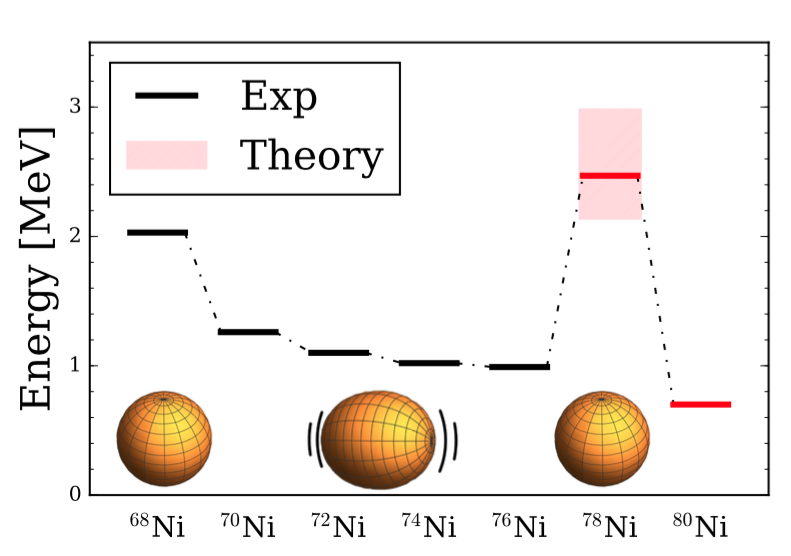
From: G. Hagen, G. R. Jansen, and T. Papenbrock, Phys. Rev. Lett. 117, 172501 (2016).
Using first-principles calculations, ORNL researchers computed the nuclear structure of nickel-78 to improve understanding of the origin, organization, and interactions of stable matter. They used the NUCCOR nuclear coupled-cluster code developed at ORNL to compute increasingly larger nuclei in a more efficient manner on increasingly more powerful supercomputers. These are the first realistic calculation of the structure of nickel-78 and its isotopic neighbors from first principles, and include the role of three-nucleon forces, coupling to the continuum, and nuclear correlations. Our calculations confirm that Nickel-78 is a doubly-magic nucleus, and that adding one or two neutrons to nickel-78 will result in the nucleus still being bound by the strong force. These successful simulations pave the way for more complex isotopes such as tin-100 and its neighbors. Their predictions of excited states in Nickel-78 will also be compared with upcoming experiments at the RIKEN facility in Japan.

